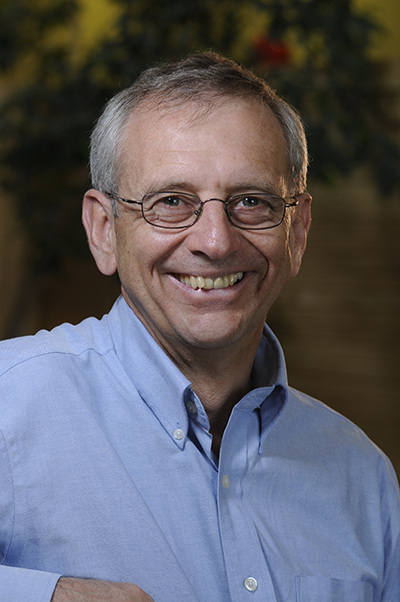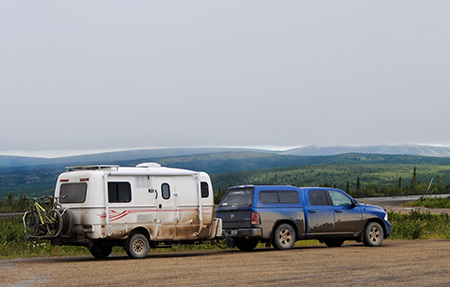In the summer of 2016, just as Dave Snadden was completing his term as Executive Associate Dean in the Faculty of Medicine, he and his partner, Moira, embarked on a 10,000-kilometre road trip through rural northwestern Canada. But his journey was not just a well-deserved break after more than a decade of educational leadership. It was also a research project.
Dr. Snadden, who later became the Rural Doctors’ University of British Columbia Chair in Rural Health, wanted to get a better sense of the challenges facing doctors in rural areas. So the trip was built around conversations with physicians in small towns and remote areas of British Columbia, the Yukon Territory and the Northwest Territories.
This was not uncharted territory for Dr. Snadden. He came to B.C. from rural Scotland in 2003 to head the Northern Medical Program (NMP), one of two distributed sites established by the Faculty of Medicine in an effort to bolster the number of physicians working in underserved areas of B.C. (The other site was on Vancouver Island; in 2012, a third site opened in B.C.’s Interior.)
As Associate Dean, NMP and later as Regional Associate Dean, Northern B.C., Dr. Snadden had his own crash course in Canadian rural health care. Not only did he have to understand the work environment for which he was preparing students and residents, but he also had to forge ties with the physicians already there, recruiting them to teach and mentor this new pipeline of future physicians.
But the insights he gleaned from that on-the-job education, as useful as it may have been for Dr. Snadden in expanding medical education to remote parts of the province, continued to intrigue him as he wrapped up his responsibilities as Executive Associate Dean, overseeing all of the Faculty of Medicine’s educational programs. So, when his term ended, he decided to build on what he already knew, in a systematic, scholarly way, so it could be shared with others.
Dr. Snadden and his wife hit the road in a Dodge Ram pickup truck, pulling a “mobile research lab” — a 17-foot Escape trailer, used for sleeping, cooking, eating and analyzing transcribed recordings of conversations he had with 39 physicians, two nurses and one clinic administrator. Those notes led to an article, co-written with his research associate, Mark Kunzli, a pharmacist, “Working Hard But Working Differently: A Qualitative Study of the Impact of Generational Change on Rural Health Care,” published in CMAJ Open in September.
“It’s not often that somebody in the twilight stage of their career gets to go out and do front-line research,” Dr. Snadden says. “That’s usually consigned to research assistants. But doing it at this stage in my career actually enriches the whole process, because I bring a lot of experience into the conversation. It has been a fascinating journey.”
What drove you to embark on this journey?
It became increasingly clear to me that there is a shift occurring in the needs and values of the younger generation of physicians. That is not a news flash – other researchers have documented this evolution. But we need to reckon with these changes, most urgently in rural and remote areas, because those communities have the hardest time recruiting and retaining doctors. They are often on the knife’s edge – all it takes is one physician or team member moving away, and they have a health care crisis on their hands. If we don’t come to terms with these generational changes, the rural areas will feel the consequences first, and suffer the most.
What are the challenges that younger physicians face when starting practice in rural areas?
We teach medical students in a milieu of scientific certainty, and then we throw them into the real world, which is beset by uncertainty. In rural areas, that uncertainty is multiplied, because they usually have few resources to call upon. They have the knowledge base, and they know how to use it. But their competence doesn’t necessarily translate into confidence, and I think that’s a function of how isolated some of them feel. They might be the only physician in town on a call shift, and could be hit with multiple, simultaneous emergencies. One young physician told me about one harrowing day, as a winter storm bore down on the town where she was the only doctor at the time. She had to help deliver a baby, worry that she might have to intubate a child suffering from a severe asthma attack who was not responding to usual medications, and resuscitate and arrange transport for someone who had a stroke, all at the same time. Can you imagine having to navigate that situation as a young physician, with perhaps one nurse to help you? We need to recognize how well rural physicians deal with these challenges.
But that is an unavoidable part of the job, right?
Yes, such high-pressure situations are inevitable. But there are things we can do that we aren’t doing now to make sure that a new physician in such a situation has the support he or she needs, so they have the confidence to keep going. One source of support is knowing they will be able to get transport for a patient when it’s necessary. Rural physicians can spend hours on the phone trying to get a hospital to accept a patient, or they are asked to do tests and imaging that their facilities aren’t equipped to do. There has to be a greater understanding by doctors in the more urban hospitals that distance does not diminish their responsibility – when a patient needs help, he or she can’t be “put on the shelf” just because they are a long way away. There also needs to be an understanding of the staffing and diagnostic realities of low resource communities. There are some exciting projects taking place in B.C. to support rural physicians, such as the piloting of video links between some rural practices and their nearest referral hospital’s emergency department, which builds relationships and trust among physicians, and thus facilitates those transfers.
Another source of support is other nearby doctors and members of the wider health care team. In towns that are large enough to have more than one doctor available, it makes a huge difference if the more established practitioners – even if they are not on call – reach out and offer their assistance in emergencies, indicate their willingness to listen and provide advice, and make introductions between the physician and the rest of the community, particularly if the physician has a family. Rural medicine is exciting, challenging and tremendously fulfilling, but it can also be scary and, particularly for recently graduated physicians, it is so important to have someone around who can show them the ropes.
The bottom line is that doctors, no matter where they practice, are more likely to gain confidence if they know they can get help when they need it. If we have any hope of having enough doctors to serve rural areas, we need to make sure that younger doctors get the support they need to gain that confidence. Otherwise, they will gravitate to places where they can find it.
What about compensation or working hours?
Fee-for-service is the traditional arrangement for physicians in rural areas, but many younger doctors would rather be on alternative salary arrangements, focusing solely on patient care, than operate as a private contractor and deal with all of the “business issues,” like owning a building, that come with running a practice. It’s not just that they don’t want the hassle — they also are being true to the patient-centered practice of medicine they were taught in medical school. Younger physicians also are more focused on preserving their quality of life and protecting themselves from burnout. So they set limits for themselves, even if that means earning less money under a high-volume, fee-for-service system. As you might expect, some older physicians look askance at such attitudes. But it’s the reality, so if we want to keep recruiting physicians to rural areas and keep them there, we must come to terms with it, which means we need to look at flexible salary and working arrangements.
How confident are you that the system can make these adjustments?
There are success stories – towns that have achieved such stability that when an opening for a physician arises, they have the luxury of selecting among a pool of candidates, rather than having to recruit one. We need to shine a light on those examples. But we also need to avoid a cookie-cutter approach. In some towns, for example, it might be best for a clinic to be owned and operated by the health authority, while in others it could be municipally-owned, or even owned by a non-profit entity. Every community is unique in terms of context, geography and history, so the details of applying these principles will differ from one place to the next.

